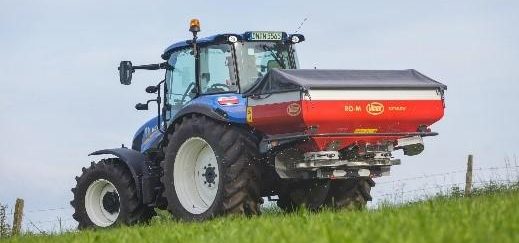Get a 24 hour weather forecast
Our fertiliser world is a changing. We now need to focus more on nitrogen use efficiency, ammonia and nitrous oxide emissions. As part of their marginal abatement curve Teagasc have identified fertiliser type as a key weapon in our fight to lower ammonia and nitrous oxide emissions from agriculture.
Switching from CAN to urea-based fertilisers lowers nitrous oxide losses but increases the risk of ammonia losses. Protecting our urea fertilisers with a technology to lower ammonia loses allow us to limit both.
To maximise our nitrogen use efficiency, we also need to become more aware of soil temperature, grass cover and weather forecasts before we hook up the spreader. We also need to maximise our use of home-produced organic fertilisers in our early spring fertiliser plans.
The timing and rate of fertiliser N application are key decisions for every livestock farmer.
Research has shown a large range in grass response to early N (between 5 to 18 kg DM/kg N applied). While the appropriate application of early N is beneficial, the incorrect application of early N is wasteful, costly, pollutes water and increases greenhouse gas emissions – Teagasc.

The following “Do’s & Don’ts” produced by Teagasc should guide your decisions around early N application.
Do:
Don’t:
Nutrient Content of slurry (1000 gals/acre)

Spring fertiliser recommendations
N = 70 units to April 1st, 90 units to May 1st
P = 20 units ( + 8 units per index drop)
K = 40 units ( + 25 units per index drop)
Spring fertiliser Plan:
Slurry:

Chemical Fertiliser

Protected Urea from Dairygold
For several years, Dairygold has been leading the industry in offering fertilisers which are based on protected urea and you our customers have been leading the industry in your use of such products. These products increase annual grass growth while decreasing ammonia and greenhouse gas (GHG) emissions. In 2020 we will have an increased range of proven technologies that protect our urea fertilisers.
In 2020, we will be continuing this trend. We will have 3 differing protected ureas on offer for the coming season:
Please contact our Inside Sales Team on 022 31644, your local Area Sales Manager or your Branch Agri Lead for more information on these products.